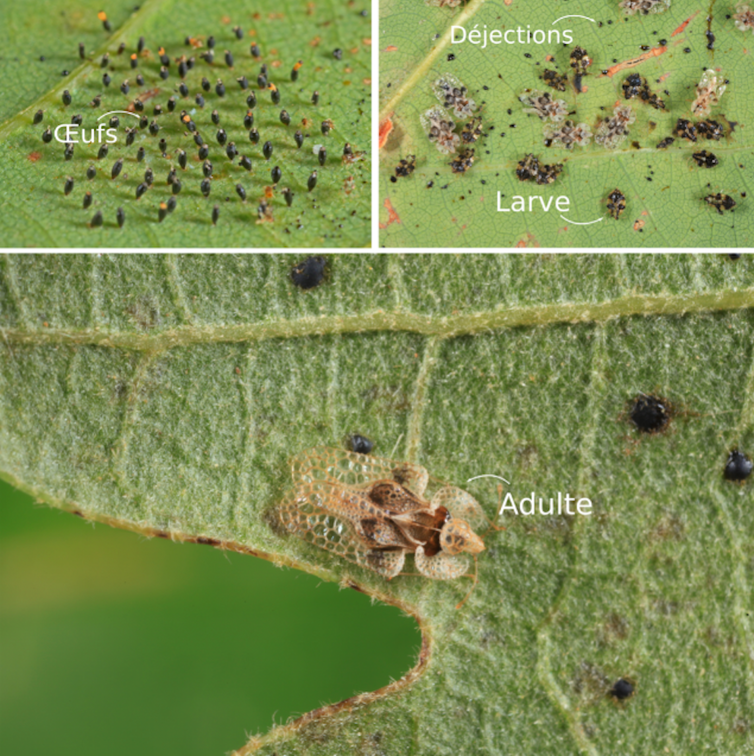holistic management of emerging forest pests and diseases
Forest health at risk: A new invasive alien species is discovered to damage oaks
The long list of herbivorous insect species associated with oak has a newcomer - a small bug from the Tingidae family. Its name is Corythucha arcuata, more commonly known as the oak lace bug.
The full news piece is written by the PhD ecology researchers Bastien Castagneyrol and Alex Stemmelen, which are part of INRAE, the coordinating institution of the HOMED project.

Image taken from theconversation.com
Corythucha arcuata is a small bug 3-4 mm long, recognizable by its ruff. The insect itself often goes unnoticed but the damage it causes immediately catches the eye! The attacked leaves turn yellow, sometimes as early as July. Discoloration can be dramatic, especially when the host plant species, the one the insect can feed on, is in close proximity to a non-host species and therefore not attacked.
As its name suggests, the oak lace bug primarily attacks oaks, although it has been reported on other tree species (chestnut, maple, hazel) or bushes (bramble). Among oaks, European oaks are the most affected - notably English oak (Quercus robur), sessile oak (Q. petraea) and hairy oak (Q. cerris). In Europe, North American oaks - such as red oak (Q. rubra) or swamp oak (Q. palustris) - do not appear to be attacked, or very exceptionally.
Invasive alien insect pests are a serious threat to forest health. In the fall of 2019, Croatia, Hungary, Romania, Serbia and the European part of Russia totaled more than 1.7 million hectares of affected oaks. It is very likely that the long-distance dispersal of C. arcuata occurs through the transport of tree trunks.
The example of the oak lace bug reminds us that it is crucial to be able to spot introductions of exotic insects early on, before they spread and become invasive. Reporting tools exist, such as the HOMED developed Silvalert application, but they are only useful if you are ready to use them. Let us be vigilant!
You can read the full news piece here.